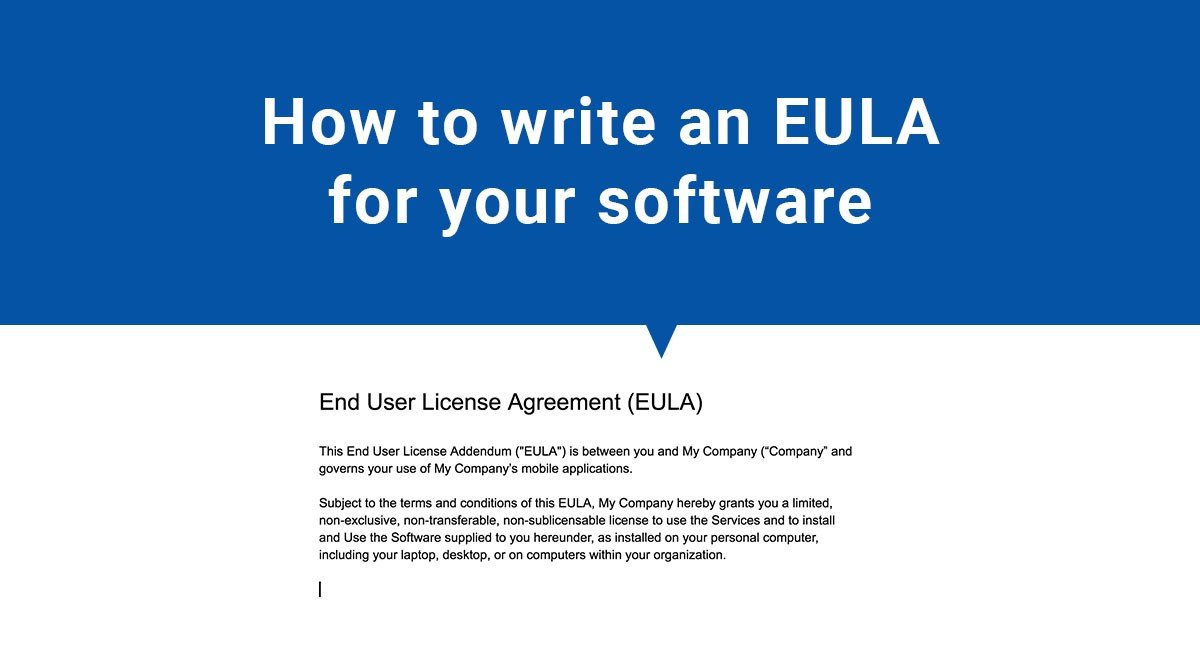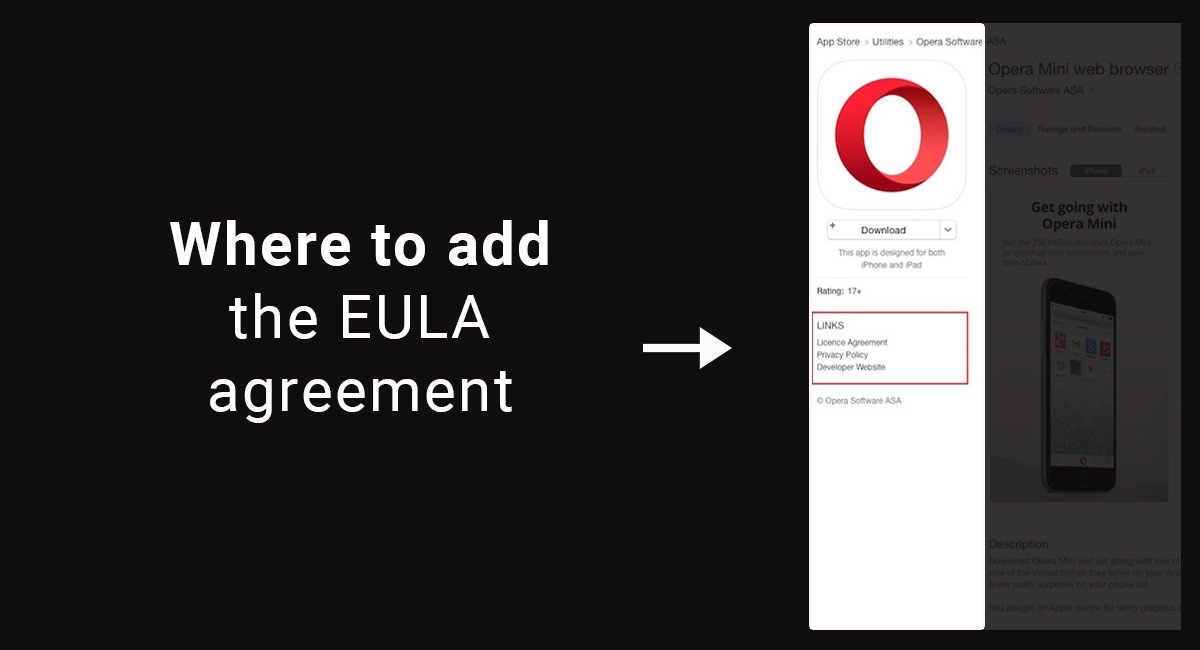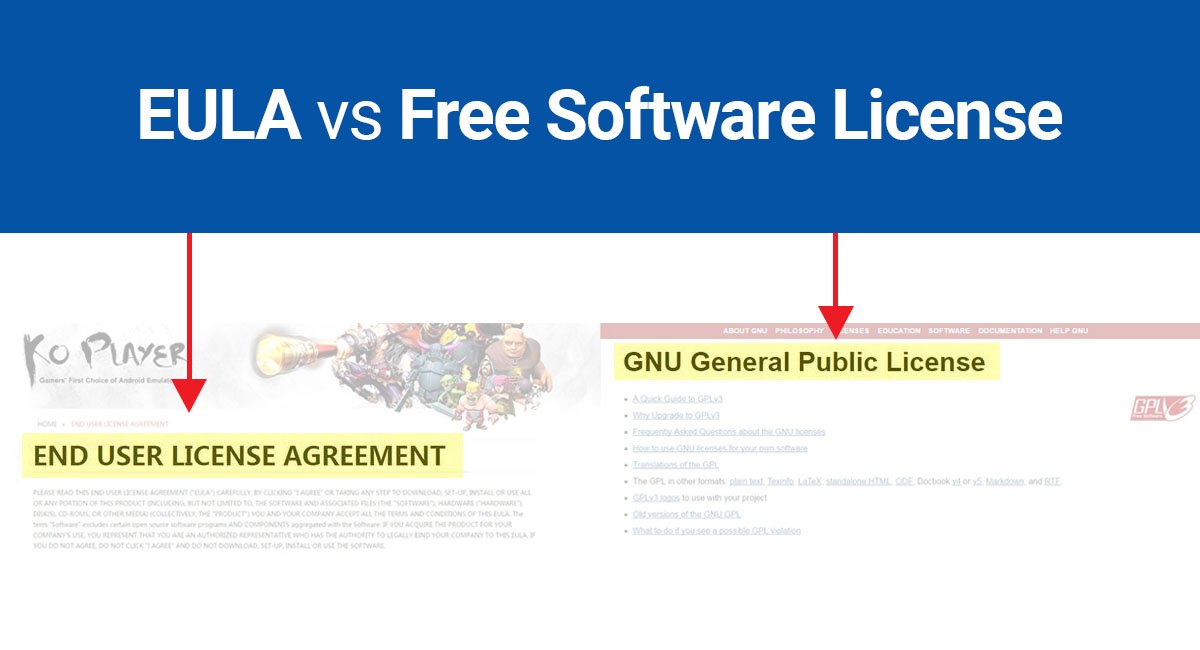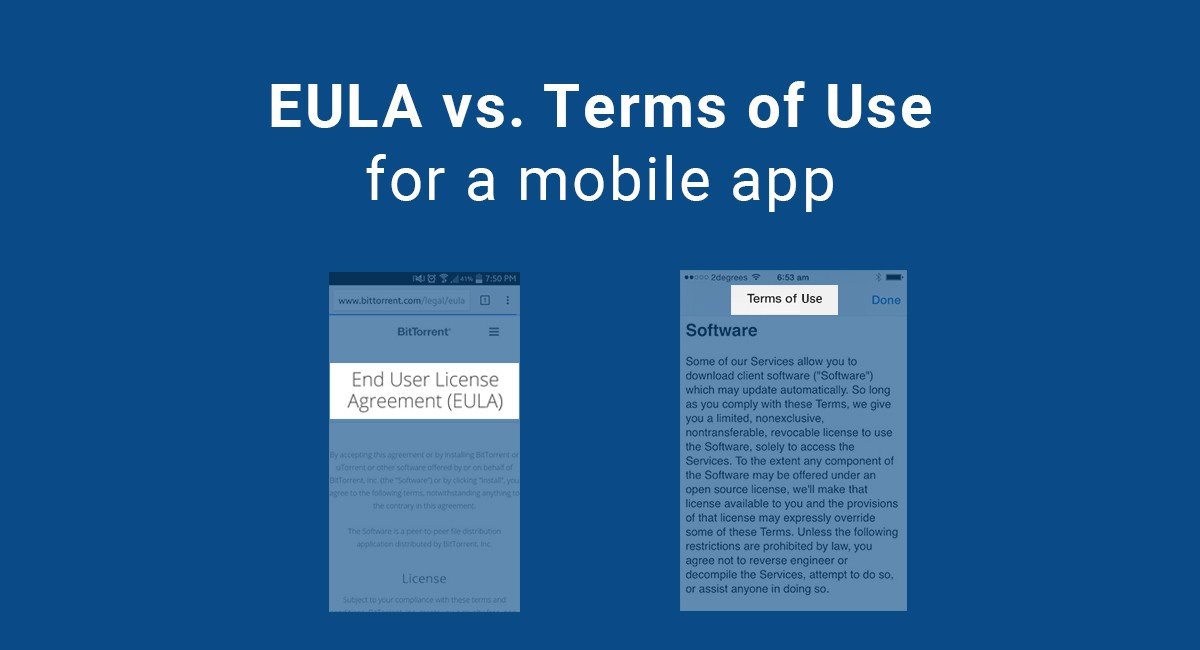An EULA, or End User License Agreement, is an important legal agreement that works to grant a limited license to use your app, as well as maintain your own rights and limit your own obligations. Users must accept your terms before installing or using your app and are thus limited by your terms upon obtaining a license to use your app.
While an EULA is an important legal agreement, it is not overly complex and is composed of a few standard clauses and content. By following this document, you will be able to write your own EULA for your own software app, quickly, easily, and completely.
Structure of an EULA
The EULA agreement is structured similarly to other legal agreements in that it has an introduction and a list of fairly standard clauses.
Some common clauses found in a standard EULA are:
- Introduction
- Licensing of Use
- Restrictions of Use
- Termination of Use
- Limitation of Liability
- Disclaimers of Warranties
- Copyright Infringement
- Contact Information
Introduction
Every EULA should begin with an "Introduction" section, which is where you detail the name of the app, the name of the company, and any other names or affiliates that will fall under the scope of the terms of the legal agreement.
Below is an example from Vocera Solutions' EULA "Introduction" clause. It summarizes the fact that the document is an agreement between the company, its affiliates, and the user. Terms that will be used later in the document are defined, and a reference given to where additional terms can be found.
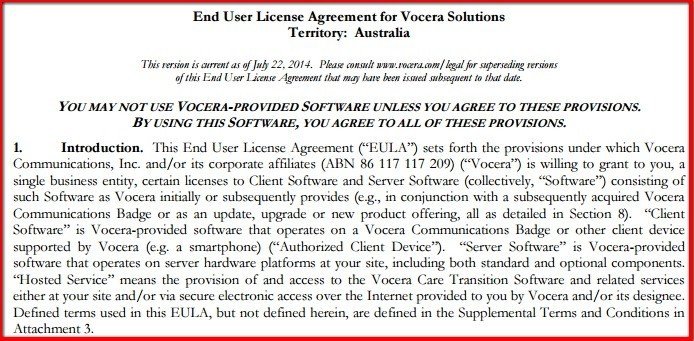
Clickfree Automatic Backup software has a more simple approach to their EULA introduction that still covers all necessary introductory points in one sentence. The EULA is defined as so, and a user is informed that the agreement is between the user and the company, and governs the use of any of the company's software.

Either approach for an introduction works, so long as you include:
- Notice that the document is a legal agreement between your company and the user
- Your company name and the name of or a reference to any affiliates
- A mention of the license to your app or product
End your "Introduction" section with clear notice that by a user clicking "I agree" or "I accept" or whatever call to action your installation requires at this step to accept the agreement, the user will be bound by the terms of the legal agreement.

Licensing of Use
This section is where you explicitly let a user know that you are granting him a license to use your app, and the scope of this granted license.
See the example below where a user is informed in this section that a "revocable, non-exclusive, non-transferable, limited right to install and use the Application on a single Mobile Device owned and controlled by You, and to access and use the Application on such Mobile Device strictly in accordance with the terms and conditions of this License" and other agreements.

The main points to get across in this clause are that:
- You are granting a license, not selling the software
- That license has limits, which will be defined further in the legal agreement
Vimeo has named their clause a "Limited License" clause, which makes it even more clear to a user that they are only receiving a limited license to use the app.

Here is another example of a "License Granting" section from Clickfree's EULA that is named and formatted differently, but still includes all of the important information. Feel free to structure the clauses for this kind of legal agreement for your software application as you'd like by using sub-headings and sub-sections, such as how Clickfree has divided theirs into a "Use" section and a "Reservation of Rights".

Vocera separates their EULA sections even more by having a "Title and Ownership" section that lets a user know that "the Software is licensed, not sold to you by Vocera and Vocera reserves any rights not expressly granted to you."
While you can include this information in the "License" section as seen in the earlier examples, you can also keep it separate for emphasis if you prefer.
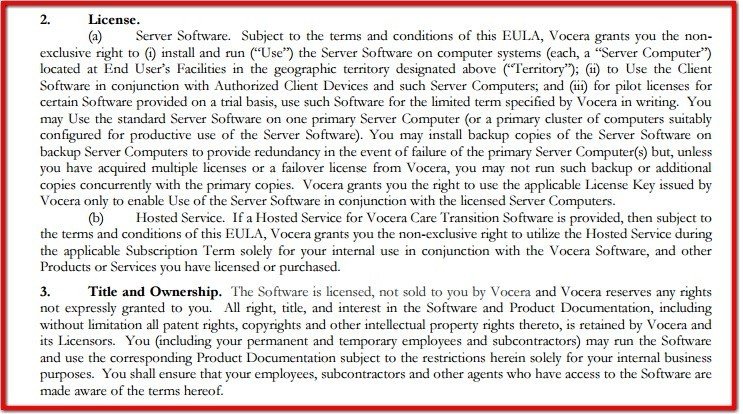
Restrictions on Use
The "Restrictions on Use" clause tends to be the longest and most detailed clause because you'll want to make sure you cover all bases of what activity you wish to limit. Common restrictions on use include not allowing spamming other users, reverse engineering software, using an app to make a profit, copying any portion of the software for your own use, or using the software in violation of any applicable laws.
Below is a standard example of a "Restrictions on Use" section that lists out each restriction:
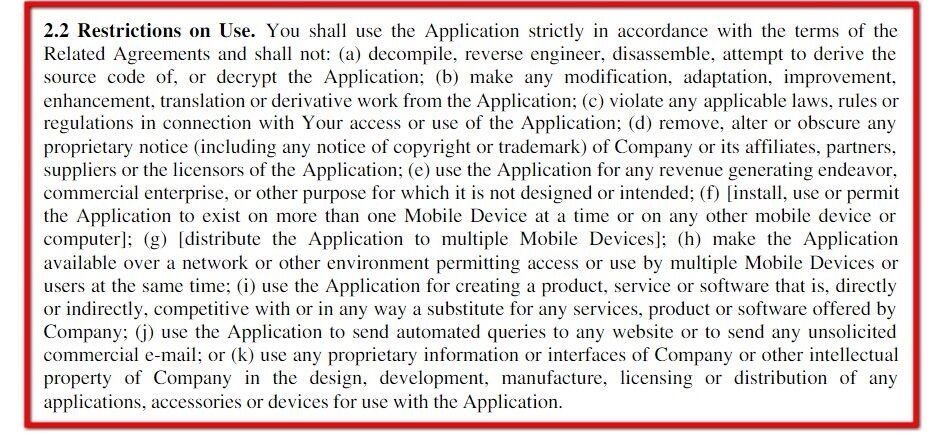
If you only have one or two restrictions on use, you can create a section simply for the limitation of that one restriction, such as how Clickfree has created a section for a "Limitation on Reverse Engineering", as seen below:

Termination of Use
Create a "Termination of Use" section where you simply state that if a user violates terms of your EULA or any other agreements you have and wish to include, or for any reason at all at your discretion, the license will be terminated and the software must be removed from the user's device.
The EULA for Parallels software lets a user know that the legal agreement will terminate automatically and without notice if there are any breaches or failures to comply with the terms of the agreement.

The EULA of Tripwire has a different structure, where 30 days written notice will be given before termination as well as time to cure a breach. This section is where the specific terms of when and how the termination of your EULA will be evoked, and any action the user must take, such as removing the software from his or her device.
Note how Tripwire has divided this section into two sub-sections to cover what each party must do in the event of a breach of the terms of the legal agreement that would trigger termination:

Make sure you let your users know:
- What will be considered a violation worthy of termination
- How that termination will commence
- What, if anything, must occur after the termination
Limitation of Liability
This clause is where you basically let users know that you are not to be held responsible for any damages that arise out of them using your app, such as damage to the devices they run your app on.
Below is an example of a basic "Limitation of Liability" clause:

Here is how Tripwire limits its liability in its EULA by first giving scenarios where there must be a liability for certain actions on Tripwire's part.

The next section of the "Liability Limitation" clause is where the limitations begin and reference section 10.1:

The final section in this clause limits not only what Tripwire is liable for, but how much money damages it can be held liable for:

The Parallels EULA has one basic section that limits liabilities, and the following section that acknowledges that limitations will be applied to the greatest enforceable extent under applicable laws. This is a good basic way to limit your liability as much as possible.

Disclaimers of Warranties
Basically, your "Disclaimer of Warranties" section will make it clear to your users that your software comes "AS IS" and that you are not warranting anything beyond the minimum required by law.
In the example below from Parallels software, Parallels do offer a limited 90-day warranty that's outlined in their EULA, as well as the "Warranty Disclaimer" section where all other warranties are disclaimed.
The language used is very standard and "disclaims any and all other warranties, whether express, implied, or statutory including without limitation any implied warranties of merchantability, satisfactory quality, fitness for a particular purpose, accuracy, timeliness, title, or non-infringement of third-party rights, to the fullest extent authorized by law."

Copyright Infringement
Always include a section that informs users that your materials are protected under copyright laws. Include anything that is covered, from the software itself to any associated documentation. The example below from Parallels makes it very clear to a user that no ownership right or right to use any trademarks is granted to users with their license.
The actual language states in part that "Any and all trademarks or service marks that Parallels uses in connection with the Software or with services rendered by Parallels are marks owned by Parallels. This Agreement does not grant you any right, license, or interest in such marks, and you shall not assert any right, license, or interest in such marks or any words or designs that are confusingly similar to such marks."

Contact Information
At the end of your EULA, add a section where you provide contact information for your users, such as your business website, mailing address, telephone number, and email address. This allows your users to easily reach out to you with questions or concerns either before or after agreeing to the agreement.
Below is a simple example from Tripwire's EULA agreement:

By including each of these sections and each of the components of the sections, you will have a thorough EULA agreement to use with your software app.

Comprehensive compliance starts with a Privacy Policy.
Comply with the law with our agreements, policies, and consent banners. Everything is included.
